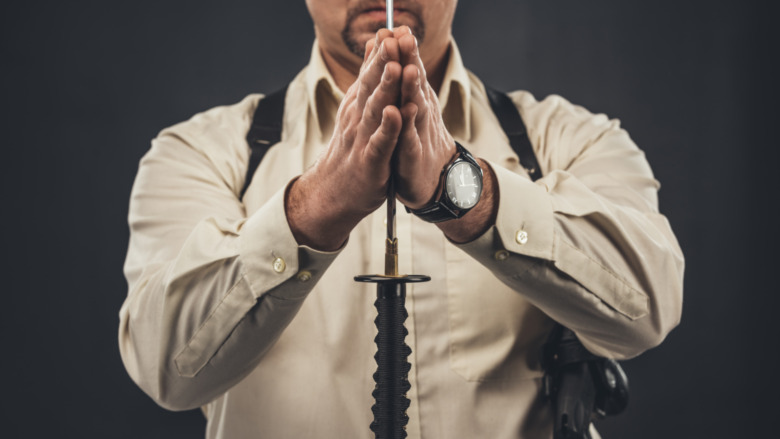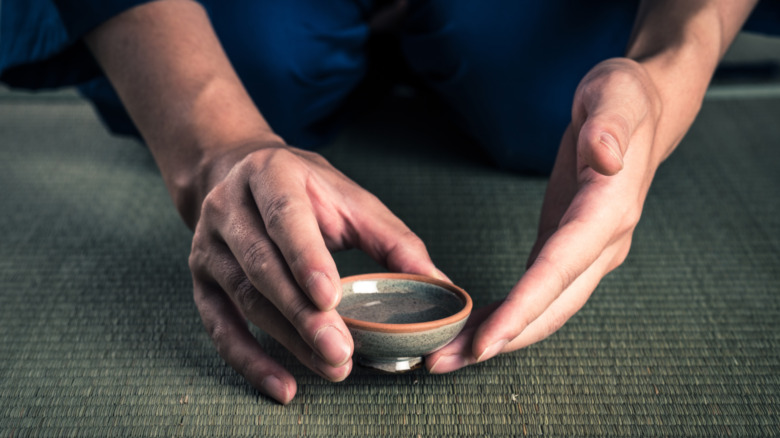This Is What Bonds Yakuza For Life
While the Yakuza's name might mean "good for nothing," per Biography, the powerful Japanese crime syndicate takes immense pride in its ceremonies — suggesting that the organization certainly considers itself good for something. One of its most intense formalities is the bonding ceremony known as the sakazuki. According to Yakuza History, the sakazuki is actually a relatively common, albeit old-fashioned, tradition in Japanese culture for formal events such as weddings. However, it takes on a different meaning for members of the Yakuza.
The time and location of the sakazuki are kept secret until just before the ceremony, per Amy Sumida. The sakazuki takes place in a purified room with an altar at the center. Three scrolls representing deities are placed beside the altar.
The ceremony begins when a moderator offers a proclamation in traditional and stylized language. The commanding Yakuza member then takes a drink of sake from a cup and then passes it along to the initiate. According to Pequod Rivista, this is supposed to represent "the blood of each man and by exchanging cups, the initiate becomes bonded to his boss as a son is bonded to his father."
The cup is then finally offered to the altar. Other items are also offered, including 12 candles for each of the zodiac signs, three mounds of salt for good luck, a bottle of sake, and one small and one large sea bream to symbolize the parent-child relationship.
After the sakazuki is completed, members are encouraged to let loose and a large party generally follows.
The deities in the ceremony depend on the gang activity
Not all sakazukis are the same, and according to The Yakuza: Pinkyless and Tatooed, the four most common types of sakazukis are known as the atomesouzoku, the oyakosakazuki, the kyoudaisakazuki, and the nakanaorisakazuki. Each of these ceremonies represents a different type of relationship between the leader and the initiate.
However, what is probably the biggest difference is the choice of deities included at the altar. These depend on which crime syndicate is behind the event; for example, a racketeering gang would celebrate a different deity than a gambling one. One of the three gods is always the same: Amaterasu, the sun goddess, who is considered the ancestor of all Japanese emperors.
A gambling-centered syndicate would also include a scroll of the current emperor of Japan, who is considered a deity, as well as Sheng, an ancient Japanese leader and the group's patron deity. A racketeering gang, in contrast, would include Hachiman, the god of war, as well as the deity of the Kasuga temple.
That said, no matter what specific gods or practices are included, what is universal is that the sakazuki is meant to symbolize a bond for life.

